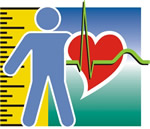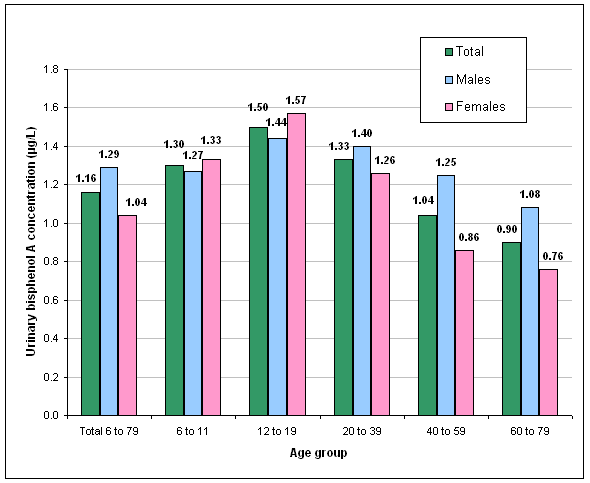Bisphenol A concentrations in the Canadian population, 2007 to 2009
Archived Content
Information identified as archived is provided for reference, research or recordkeeping purposes. It is not subject to the Government of Canada Web Standards and has not been altered or updated since it was archived. Please "contact us" to request a format other than those available.

Background
The 2007 to 2009 Canadian Health Measures Survey (CHMS) is the first national survey to measure bisphenol A (BPA) in Canadians. BPA does not occur naturally in the environment. It is an industrial chemical used primarily in the production of polycarbonate plastic and epoxy resins. Polycarbonate is widely used in consumer products such as food containers and water bottles. Epoxy resins are used as protective linings for canned food and beverages, the inner coating on metal lids for glass jars and bottles, and dental sealants.
People are mainly exposed to BPA through dietary intake, although drinking water, soil, dust, air, and some consumer products are also sources of BPA. BPA can migrate from food packaging, particularly when heated, as well as from repeat-use containers. Some studies on animals suggest that low levels of exposure to BPA very early in life can affect neural development and behaviour. However, there is some uncertainty in interpreting how these findings might be relevant to human health. One of the aims of the CHMS was to measure, for the first time, a number of environmental contaminants, including BPA, in a representative sample of the Canadian population. These first results of BPA concentrations will establish a baseline upon which future measures can be compared to study trends.
Results
BPA was detected in the urine of 91% of the population aged 6 to 79 years. Because of differences in sample populations, age groups and laboratory analytical methods, comparisons with other studies must be made with caution. Nonetheless, the National Health and Nutrition Examination Survey (NHANES) in the U.S.A. detected BPA in 93% of the American population aged 6 and older. The German Environmental Survey detected it in 99% of 3 to 14 year olds. These data suggest continual and widespread exposure to BPA.
Canadians aged 6 to 79 had a geometric mean concentration of urinary BPA of 1.16 micrograms per litre (µg/L). This is consistent with results in international studies of reference populations reporting mean or median concentrations of 1 to 3 µg/L.
Concentrations of BPA varied somewhat by age group: 12 to 19 year olds generally had higher geometric mean concentrations (1.50 µg/L) than did children aged 6 to 11 (1.30 µg/L). Geometric mean concentrations in adults decreased with age, going from 1.33 µg/L for 20 to 39 year olds to 0.90 µg/L for 60 to 79 year olds. Differences in concentrations of BPA in urine among age groups may be due to differences in food consumption, differences in the body's absorption, distribution, metabolism and excretion of BPA, urine dilution, or the use of products containing BPA.
Chart 1
Bisphenol A concentrations in urine in the Canadian population, by age group and sex, 2007 to 2009 (geometric means)

Note: A geometric mean is a type of average that is less influenced by extreme values than the traditional arithmetic mean. The geometric mean provides a better estimate of central tendency for highly skewed data. This type of data is common in the measurement of environmental chemicals in blood and urine.
Source: Canadian Health Measures Survey, 2007 to 2009
More information on this topic is available in "Lead and bisphenol A concentrations in the Canadian population" Health Reports (82-003-X).
- Date modified:
